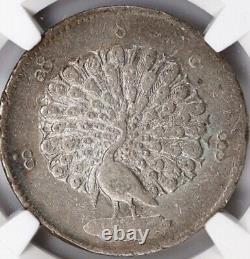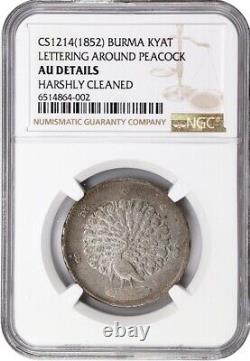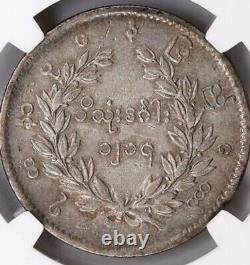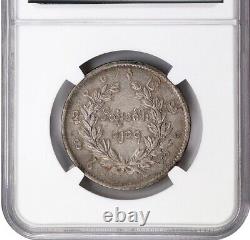NGC AU Burma PEACOCK 1 Kyat Silver Coin, 1852 AD CS1214 Mandalay Mint, STUNNING





Burma Kyat PEACOCK Silver Coin, 1852 AD (CS1214), Lettering around, NGC AU. Translation: According to Robinson & Shaw'The coins and banknotes of Burma', p. 92-93 the words on the obverse are'Tazeik taw' or'Royal stamp'. Translation: the outer reverse legend is'Yandabon Nepydiaw' or'Mandalay the Royal residence'. The central inscription is't'tjat thon dinga' or'Use coin as 1 kyat' and the date below is 1214 Buddhist era, 1852-53 AD.
The Kyat coin depicts the personal emblem of the king, a peacock with a fanned out tail on the obverse side. The date depicted on this coin is 1214 CS Burmese era (1853 CE), the year King Mindon Min ascended the throne. It was widely circulated in Burma and was often called the'peacock rupee'.
The machinery and dies for producing these silver coins were imported from Birmingham, England. These peacock coins were issued from the Mandalay Mint, which was set up within the Mandalay palace complex, the ruins of which are still in existence. In 1878, new bronze and gold coins bearing a lion motif were issued by Mindon's successor Thibaw. Thus, silver kyat production ceased.

